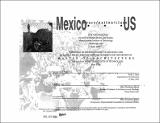| dc.contributor.advisor | Ellen Dunham-Jones.Yet we remain far from a theoretical or philosophical consensus regarding exactly what constitutes the (necessarily re-formed) public sphere. It follows, then, that architecture, historically the medium of choice for the public expression of consensual social paradigms, is, as a profession, at a loss to define the conceptual parameters for an appropriate contemporary approach to public design. This thesis, consisting of two components-a written text and an architectural design-draws on theoretical debates on the "public sphere" (assuming one still exists as such) in the definition of the issues to be addressed in the contemporary design of "public space". I have used a 1993 design competition co-sponsored by the AlAS and Graphisoft, Inc., entitled "Beyond the Border", (see appendix 1) as a vehicle for the architectural component of this investigation. The site, a proposed border crossing near EI Paso, Texas and Ciudad Juarez, Mexico, brings into play many of what I feel to be the central issues-the redefined role of the nation-state, the formation of community identity, difference, and class-to be addressed in a redefinition of the public sphere, with consequences for an architecture of public space. | en_US |
| dc.contributor.author | Mar, Erik Chia-Kong | en_US |
| dc.contributor.other | Massachusetts Institute of Technology. Dept. of Architecture. | en_US |
| dc.date.accessioned | 2012-01-12T18:37:47Z | |
| dc.date.available | 2012-01-12T18:37:47Z | |
| dc.date.copyright | 1995 | en_US |
| dc.date.issued | 1995 | en_US |
| dc.identifier.uri | http://hdl.handle.net/1721.1/68304 | |
| dc.description | Thesis (M. Arch.)--Massachusetts Institute of Technology, Dept. of Architecture, 1995. | en_US |
| dc.description | Includes bibliographical references (p. 89-92). | en_US |
| dc.description.abstract | With the much-commented upon shifts in the global economy and the problematizing of traditional social, economic, cultural, and political relationships, the role of architecture as a "public" practice has fallen under scrutiny. The "privatization of public space", resulting from the overt merging of "public" concerns (typically represented through the State) and "private" interests (in our society, usually defined by groups with significant power over investment decisions) is often taken as symptomatic of a general trend towards the breakdown of democracy itself. Here, however, it is important to differentiate between what can be termed the "public sphere", or the abstract discursive arena where thought is (re)produced and debated, and "public space", or the actual built spaces of personal encounter among strangers. Certainly, since the Enlightenment when the terms first acquired widespread currency, the latter has depended upon some conception of the former. | en_US |
| dc.description.statementofresponsibility | Eric Chia-Kong Mar. | en_US |
| dc.format.extent | 92 p. | en_US |
| dc.language.iso | eng | en_US |
| dc.publisher | Massachusetts Institute of Technology | en_US |
| dc.rights | M.I.T. theses are protected by
copyright. They may be viewed from this source for any purpose, but
reproduction or distribution in any format is prohibited without written
permission. See provided URL for inquiries about permission. | en_US |
| dc.rights.uri | http://dspace.mit.edu/handle/1721.1/7582 | en_US |
| dc.subject | Architecture. | en_US |
| dc.subject.lcc | n-us--- n-mx--- | en_US |
| dc.title | Mexico -- space/nation/class -- U.S. | en_US |
| dc.title.alternative | Mexico -- space/nation/class -- United States | en_US |
| dc.type | Thesis | en_US |
| dc.description.degree | M.Arch. | en_US |
| dc.contributor.department | Massachusetts Institute of Technology. Department of Architecture | |
| dc.identifier.oclc | 33342435 | en_US |
